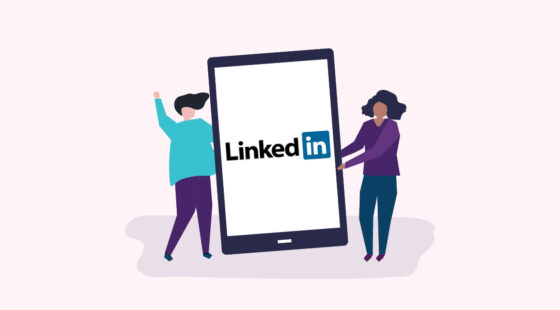 Keira Krausz is the Chief Marketing Officer of HPOne and serves on the board of Second Nature Brands (owner of the Second Nature Snacks, Kar’s Nuts, and Sanders Candy brands), where she leads the Digital Committee. An award-winning Direct-to-Consumer marketer, Krausz has spent her career focused on the melding of data-driven analytics and compelling creative. From 2013-2018 Krausz was the CMO and EVP of Nutrisystem, Inc., where her team reversed a seven-year decline and returned the company to sustained growth, to nearly double revenue and quadruple EBITDA. Krausz attended Cornell University as an undergraduate and has an MBA from the Tuck School at Dartmouth College.
Keira Krausz is the Chief Marketing Officer of HPOne and serves on the board of Second Nature Brands (owner of the Second Nature Snacks, Kar’s Nuts, and Sanders Candy brands), where she leads the Digital Committee. An award-winning Direct-to-Consumer marketer, Krausz has spent her career focused on the melding of data-driven analytics and compelling creative. From 2013-2018 Krausz was the CMO and EVP of Nutrisystem, Inc., where her team reversed a seven-year decline and returned the company to sustained growth, to nearly double revenue and quadruple EBITDA. Krausz attended Cornell University as an undergraduate and has an MBA from the Tuck School at Dartmouth College.
What inspired your corporate board journey?
2020 has been a year, for me and I’m sure many others, to reflect on the bigger picture. There have been years when it occurred to me, in passing, that I had something to contribute as a board member, or when I had received an inquiry about interviewing for a board position, but I always said, “not now” or “I don’t have time.” This year, however, I made time for introspection and planning and realized three things; that I wanted to start making time for things that matter to me, that corporate board service would be a great opportunity to meet amazing and like-minded people, and that there are companies that would, indeed, benefit from my knowledge – nobody is doing me a favor by “letting you on the board”, and because of COVID, there’s an increase in the demand for direct-to-consumer marketing expertise. So, I thought, “Now’s the time.”
How long did it take you to get your first corporate board seat after you started devoting time to the process?
I believe it took around four or five months for me, but it’s important to know there is no set timeline. And, at least in my case, there was some luck involved. However, preparation is what really helped me land my seat. I did so by networking, listening to the WIB webinars, and engaging with Sheila in our one-on-ones. I also think the thing that helped me the most about staying sane and keeping on track during the process was recognizing that there was joy and interest in the process itself. It also allowed me to keep learning and stay fresh.
What was your biggest fear when it came to corporate board service?
Making too many commitments and not being able to perform at the level I find acceptable. And what I mean by that is I don’t like and won’t do things at a “B level” it has to be at an “A level.” I had just started a new role in a new industry – all within two months of joining a board, and I was really worried I’d disappoint someone or myself.
What was your greatest obstacle in getting on a corporate board?
Well, there were two. The first was ensuring that a board was a culture fit. Women in the Boardroom members, we are all likely qualified for a number of boards, but you have to make sure you fit culturally and philosophically. I interviewed for a few positions in which we just were not a fit for each other because of things like communications style, the way decisions were made, the level of formality, or simply because of the structure of the board. The other obstacle was finding a board that needed my skillset and experiences and that requires a bit of luck and patience. If a board needed a CFO, I’m simply not that person.
How many corporate boards did you interview for before landing your first seat at the table?
I interviewed for a total of four boards, and I landed one of those four. I’m a very good culture fit with the management team, and I had the exact skillset they needed. When it works, It works, and it did with this opening. It no longer feels like work, it’s becomes fun at that point. The work itself is fascinating and I’m happy to do it.
How did you prepare – in every sense: emotionally, intellectually, practically – for your first board meeting and in what ways did that preparation pay off?
It’s a process – I asked a lot of questions and made sure I was up to speed with the business of the board I was appointed to. It’s important for those on this journey to understand that you should learn as much as you can about the business, what they need from you, who performs what function, and what the dynamics of the business. My advice would be this: If there are strategic documents, you can see – get that information before your first meeting. If you’re the expert in an area, meet first in that one area and find out what they’ve been up to and what their challenges have been. Emotionally – I struggled with imposter syndrome at one point or another. The rest of the board members will know each other, and it may feel a little awkward at first, but that’s normal. Know that that is going to happen. Finally, I would tell women to consider pushing themselves, and what I mean by that is if you’re a listener, push yourself to contribute. Push yourself to participate in some meaningful way.
What’s one thing that surprised you about the process of working toward a corporate board seat?
I didn’t think that the process would be enjoyable as it was. I found it impactful. It was delightful to meet so many accomplished and interesting people and to learn about new businesses. A couple of them had a meaningful impact on the way I approach certain challenges. I wasn’t expecting that.
How did you get connected to your first board seat?
Women in the Boardroom board opening notifications!
How did you prepare for getting on a corporate board?
I read everything that there was to read, watched all Women in the Boardroom videos/webinars, and did exactly as recommended. I also spoke with friends/mentors who serve on boards and asked for advice. This helped me to understand, particularly, how interviewing for and serving on a board differs from interviewing for and getting hired into an operational role.
What has surprised you about the reality of board service versus the expectations that you had coming in – in a positive or maybe not so positive way?
The thing that I underestimated the most was the enjoyment that comes from helping the management team. And how I would enjoy being involved in someone else’s business that’s adjacent to what I’ve done before. As I started the process, I thought about the responsibilities but not about what would be energizing and fun.
What one piece of advice would you offer to women interested in corporate board service?
Be patient, be persistent, know what you have to offer (and what you don’t), and enjoy the process itself. And also, if this is your next phase in your career, there can be a temptation to make a lot out of this every day. I would advise against that. Don’t spend all day thinking about this. Chunk it into reasonable sizes.
What one thing do you wish you knew before you started your board journey?
I probably could have done this sooner.
What knowledge and/or practice specific to WIB prepared you for corporate board service?
The webinar on how to prepare my LinkedIn profile was simple and quite helpful. I used that as my blueprint. The webinars are great tools.
Why should women be interested in serving on a corporate board?
An answer that could go on for hours! But, do you want to change the world? Board service is something you can do that will actually make an impact. This is in the trenches change. If you’re in a position that you can do this, you can change the world. Change starts with you! And on a more selfish note, serving on boards is a way of extending our careers and doing some good for others while meeting incredible people who keep us thinking, engaged, and growing.
How has preparing for board service sharpened your professional skills?
The board I sit on is owned by a PE company and the company I work for is also PE backed. So, being on the other side, the board side, and working with their CMO makes me a better board member and vice versa. Being a board member also makes me more dynamic, flexible, and helps me in my own operational role.
Once appointed, what elements of corporate board service surprised you the most?
I actually was needed! Ha ha. Actually, I haven’t served all that long, so no surprises so far.






